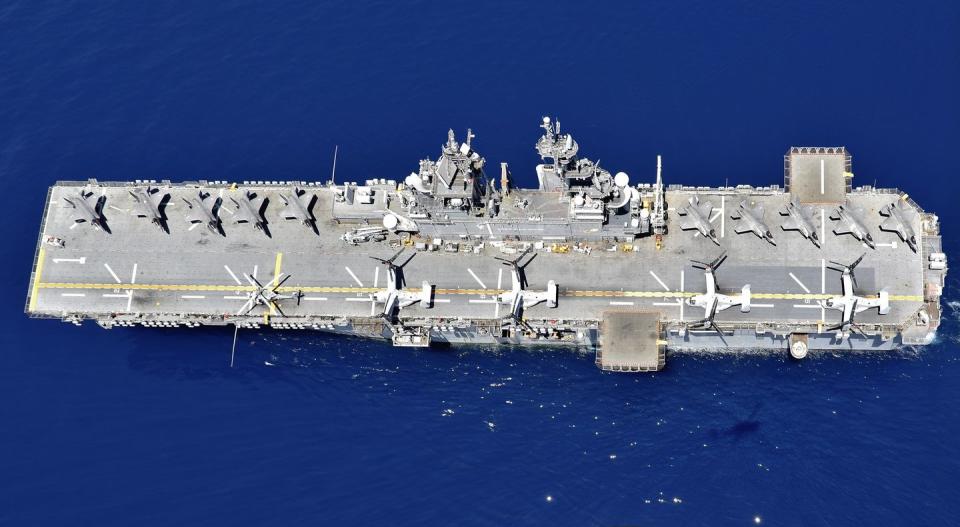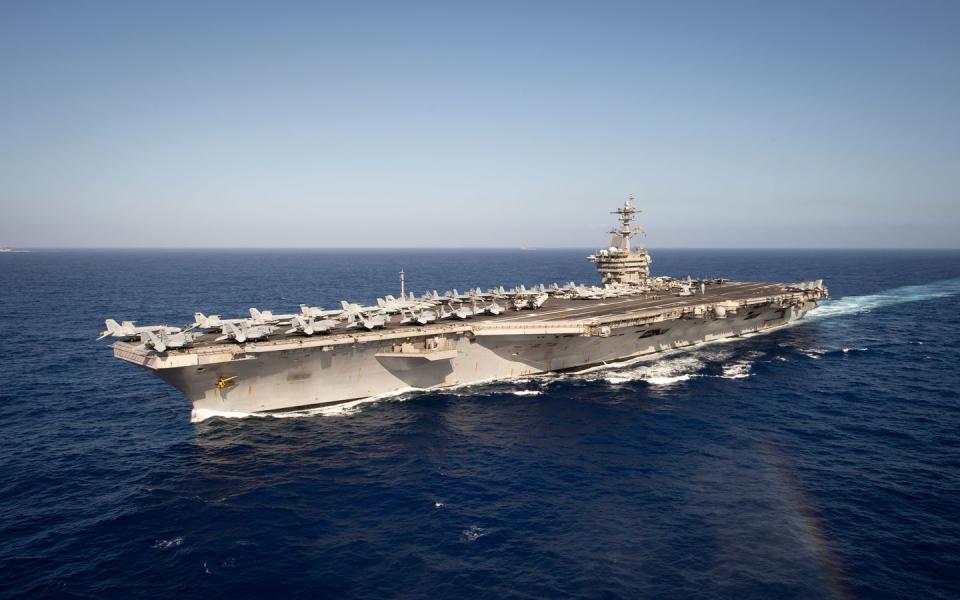Turning Amphibious Ships Into 'Lightning' Aircraft Carriers

The U.S. Marines claim that their ability to turn amphibious ships into aircraft carriers is a major advantage on the battlefield.
Amphibious ships, though not full-fledged aircraft carriers, can carry up to 20 F-35Bs.
The ability to mount different types of attacks on an adversary using the same ship platform complicates the enemy’s ability to mount an effective defense.
The U.S. Marines are touting the ability to quickly reconfigure an amphibious assault ship into a mini-aircraft carrier carrying up to 20 F-35B Lightning II fighters. The Wasp and America-class ships, both 840 feet long, can carry a Marine landing force or two squadrons of the fifth-generation jets, alternating between the two in a matter of days. The result, the Marine Corps claims, is an unpredictable force that a wartime enemy will find difficult to counter.
The Marines, according to Business Insider, consider the “Lightning carrier” concept a game changer. The USS Wasp and USS America-class amphibious assault ships can both carry between 16 and 20 F-35Bs—the vertical takeoff and landing version of the F-35 Joint Strike Fighter used by the U.S. Marine Corps. The ships both have full-length flight decks, hangars, and stores for fuel and munitions that allow them to typically carry about half a dozen F-35Bs. If the ships delete their normal complement of helicopters and MV-22 Osprey tiltrotors, they can carry more than three times as many F-35Bs.

The Marines have tested the Lightning carrier concept several times. In November 2016, USS America conducted exercises off the coast of California with 12 F-35Bs embarked, twice as many as usual. In 2019 the Japan-based USS Wasp deployed into the South China Sea with at least 10 F-35Bs. China has issued warnings it considers up to 90 percent of the South China Sea a Chinese territory and has built numerous artificial islands bristling with missiles, fighter jets, and radars that would become targets for the Marines in the event of war. There are currently eight Wasp-class ships and one America-class, with more ships of the latter planned or under construction.
The “Lightning carrier” can create an ad hoc carrier during wartime while the U.S. Navy’s Nimitz and Ford-class supercarriers are tied up elsewhere. Alternately a Lightning carrier could sail alongside such a supercarrier, adding up to 20 more fighter jets to the supercarrier’s 44 jets. That’s almost a 50 percent increase in fighter planes.
Lightning carriers do have their disadvantages. The Wasp and America-class ships are built to normally carry helicopters, tiltrotors, and fighters, and deploying three times as many fighters as the ship was meant to carry could create supply problems, especially in terms of fuel and munitions. The America-class ships, built with expanded aviation services at the expense of the ability to land Marines by sea, would be considerably better in supporting a large number of F-35Bs.

Lightning carriers also lack catapults and arresting gear, meaning the ship can’t embark Navy aircraft such as the E-2D Hawkeye airborne early warning plane, EA-18G Growler electronic attack jet, and the planned MQ-25A Stingray unmanned tanker. These aircraft extend the detection range of a carrier, escort strike fighters into enemy territory, and extend the range of embarked fighters. A Lightning carrier could benefit from such planes by sortieing alongside a supercarrier.
In strategic sense, the Lightning carrier ability complicates an adversary’s ability to defend against a Marine force. If an adversary with a coastline knew a Wasp or America-class ship were in the area, they would need to prepare for the possibility of an amphibious attack. Thanks to the Lightning carrier concept, they would also have to array their forces to defend against the possibility of heavy air attack by F-35Bs.
Defending against one threat is different than defending against the other—and that's the point.
You Might Also Like


